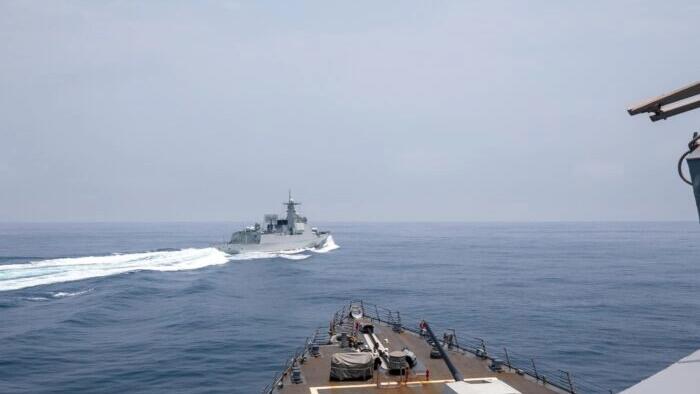In a recent display of military prowess, Beijing conducted extensive military drills around Taiwan, involving over 125 aircraft and 34 naval and coast guard units. This operation, led by Chinese President Xi Jinping, serves dual purposes: it not only aims to intimidate Taiwan and potential international supporters but also signifies China’s strategic plans for the forced reunification of the island with the People’s Republic of China (PRC). More than just a demonstration of capability, this exercise signals Xi’s intention to frame any ensuing violent reunification efforts in a legal light, portraying them as justified under international law. Notably, the participation of the People’s Armed Police Coast Guard (PAPCG) indicates a possible move towards declaring a maritime exclusion or quarantine zone around Taiwan, further complicating the already fraught cross-strait relations.
The presence and activities of the PAPCG during these drills are particularly telling. Their operations have escalated, with coast guard cutters not only encircling Taiwan but also patrolling waters close to other Taiwanese islands. This marks a continuation of a trend where the PLA’s Eastern Theater Command incorporates coast guard and maritime security units to create a more pronounced presence in the area. For instance, in a previous operation, the PAPCG engaged with a Taiwan ferry, showcasing their coercive tactics in asserting de facto control over Taiwanese waters. Such actions are indicative of Beijing’s strategy to consider maritime operations as a legal framework for isolating Taiwan while refraining from officially declaring war, thus avoiding the potential ramifications that would accompany such a declaration.
The narrative surrounding Taiwan’s status plays a crucial role in Beijing’s approach. The PRC insists that Taiwan is a breakaway province, categorizing all its territories, including airspace and maritime zones, as sovereign PRC territory. Consequently, China believes it has a legitimate right, under international laws such as the United Nations Convention on the Law of the Sea (UNCLOS), to regulate access and commerce within this sphere. This framing allows Xi to potentially justify a maritime quarantine—an action that, while aggressive, can be portrayed as a lawful domestic operation according to Beijing. By positioning foreign attempts to support Taiwan as acts of aggression against a rightful sovereign claim, Xi might aim to dissuade Western nations from providing assistance to the island, complicating international responses to a potential crisis.
The scale and support for these operations involve not only the world’s largest coast guard but also significant backing from the PLA, which maintains a constant presence in the region. The collaboration between the PAPCG, Maritime Safety Administration, and the PLA’s naval and air forces positions the PRC to respond rapidly to any perceived threats. Moreover, recent missile tests by the PLA Rocket Force underscore the military readiness that underpins this posture, indicating an escalation in preparedness for potential operations against Taiwan. While the Joint Sword-2024B exercises may not have been as extensive as previous drills, their execution still demonstrates Beijing’s aggressive posture and intention to project military strength in the region.
Furthermore, China’s military strategy employs a carefully curated narrative that seeks to legitimize its actions within a legal framework. This multifaceted approach involves a blend of military intimidation, media manipulation, and legal arguments designed to shape public perception and international opinion in its favor. Under what is termed the “Three Warfares” doctrine, Beijing orchestrates a concerted effort to influence the narrative surrounding its military activities, often portraying them as necessary measures to quell an insurrection. Consequently, deciphering these tactics is vital for the United States and its allies, as they face the daunting task of countering Xi’s ambitions without falling into the traps of legalistic justifications set by Beijing.
Ultimately, the strategic and political complexity of China’s operations around Taiwan reinforces the need for a concerted international response to deter Xi’s expansionist designs. This challenge lies not merely in addressing the immediate military threat but also in reframing the narrative to expose the underlying intentions buried beneath China’s legalistic façade. For Western leaders, particularly those in the United States, understanding and countering this sophisticated blend of military, legal, and media tactics is essential for maintaining stability in the Western Pacific. Ensuring that Taiwan can rely on external support without being completely isolated by a faux legal justification from Beijing is critical in the ongoing contest for influence in the region, as the stakes continue to rise amid evolving geopolitical tensions.

